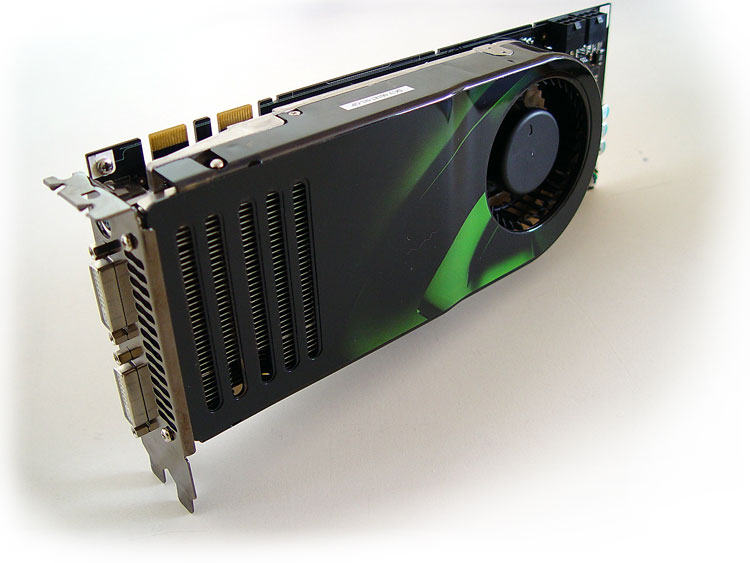Page 9 - Heat & Noise
Dangerous Liaisons - temperatures of the graphics card
Let's have a look at the temperatures these design coolers produce. We measured at a room temperature of 23 Degrees C.
Now we could not use external applications (software) to monitor the temps and had to rely on the results from a beta ForceWare driver. The core temperature of the product is a tad high. At idle all G80 cards were running at ~57 Degrees C which is quite excessive.
|
|
||
 |
||
|
|
||
 |
||
The peak temperature when the product was utilized at 100% was 81 degrees C. I hope this is a bug in that driver register as I found it quite high. When I placed my hand on the cooling solution it's not even nearly giving me the impression that the card is really getting that warm.
So for now, to be continued.
Noise Levels coming from the graphics cardWhen graphics cards produce a lot of heat usually that heat needs to be transported away from the hot core as fast as possible. Often you'll see massive active fan solutions that can indeed get rid of the heat, yet all the fans these days make the PC a noisy son of a gun. I'm doing a little try out today with noise monitoring, so basically the test we do is extremely subjective. We bough a certified dBA meter and will start measuring how many dBA originate from the PC. Why is this subjective you ask? Well, there is always noise in the background, from the streets, from the HD, PSU fan etc etc, so this is by a mile or two not a precise measurement. You could only achieve objective measurement in a sound test chamber.
The human hearing system has different sensitivities at different frequencies. This means that the perception of noise is not at all equal at every frequency. Noise with significant measured levels (in dB) at high or low frequencies will not be as annoying as it would be when its energy is concentrated in the middle frequencies. In other words, the measured noise levels in dB will not reflect the actual human perception of the loudness of the noise. That's why we measure the dBa level. A specific circuit is added to the sound level meter to correct its reading in regard to this concept. This reading is the noise level in dBA. The letter A is added to indicate the correction that was made in the measurement.
|
TYPICAL SOUND LEVELS | ||||
Jet takeoff (200 feet)
120 dBA
Construction Site
110 dBA
Intolerable
Shout (5 feet)
100 dBA
Heavy truck (50 feet)
90 dBA
Very noisy
Urban street
80 dBA
Automobile interior
70 dBA
Noisy
Normal conversation (3 feet)
60 dBA
Office, classroom
50 dBA
Moderate
Living room
40 dBA
Bedroom at night
30 dBA
Quiet
Broadcast studio
20 dBA
Rustling leaves
10 dBA
Barely audible
We startup a benchmark, we take the dBA meter, move away 75 CM and then aim the device at the active fan on the graphics card.
We measure almost 46 dBa on the PC for both models, which is to be considered a quiet to moderate noise level coming from the entire PC. Again, this is a very subjective test. Not bad at all.

